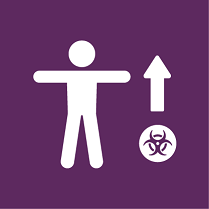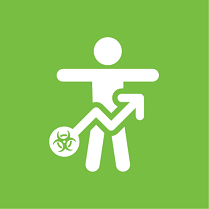Toxic Free Kids
Related Topics
- Children's Environmental Health
- Contaminants of Emerging Concern
- Formaldehyde in Your Home
- Lead Poisoning Prevention
- Healthy Homes
- MDH Guidance
- Safe Drinking Water for Your Baby
Environmental Health Division
Contact Info
Toxic Free Kids Program
Chemicals of High Concern
Background
The Toxic Free Kids Act required that Minnesota Department of Health (MDH), after consultation with the Minnesota Pollution Control Agency (MPCA), generate a list of chemicals of high concern (CHC) by July 1, 2010. The chemicals had to meet these criteria identified in Minnesota Statutes, section 116.9401:
"Chemical of high concern" means a chemical identified on the basis of credible scientific evidence by a state, federal, or international agency as being known or suspected with a high degree of probability to:

1. Harm the normal development of a fetus or child or cause other developmental toxicity.

2. Cause cancer, genetic damage, or reproductive harm.

3. Disrupt the endocrine or hormone system.

4. Damage the nervous system, immune system, or organs, or cause other systemic toxicity.

5. Be persistent, bio-accumulative, and toxic.

6. Be very persistent and very bio-accumulative.
The law also instructs MDH to consider chemicals that fit the above criteria by a state, federal, or international agency. These agencies may include but are not limited to the following: the California Environmental Protection Agency, the Washington Department of Ecology, the United States Department of Health, the United States Environmental Protection Agency, the United Nation's World Health Organization, and European Parliament Annex XIV concerning the Registration, Evaluation, Authorisation, and Restriction of Chemicals.
MDH is required to update the chemical list at least every three years. The most recent update was published on July 21, 2025. The next update is due to be published in July 2028.
The following drop-down menus provide the current (2025) chemical list as well as other details regarding the update.
The revised 2025 chemicals of high concern list can be downloaded from the links below. A report describing the revision and review process for the list can be found on the Reports page or in the dropdown report section below.
The chemicals of high concern list was first published in 2010. MDH is required to review and revise the list at least every three years. If you wish to view the original 2010 list or previous updates, please contact MDH at 651-201-4899 or health.risk@state.mn.us with your request.
Current chemicals of high concern list in different formats.
- Chemicals of High Concern List, 2025 (PDF)
- Chemicals of High Concern List, sorted by Chemical Abstract Service (CAS) Registry number (PDF)
- Microsoft Excel format: 2025 Chemicals of High Concern List (Excel) Note: If you are importing the Excel file into a database such as Microsoft Access, it is helpful to select the "Long text" data type for columns labeled "Chemical Name," "Source(s)" and "Use example(s) and/or Chemical Class" to prevent truncation of content in some cells.
- Microsoft Excel format: Chemicals Added or Removed to the Chemicals of High Concern List in 2025 (Excel)
- Chemicals Removed from the Chemicals of High Concern List in 2025 (PDF)
- This is a table that lists the 2022 chemicals of high concern that have been excluded from the 2025 version of the list.
- Chemicals Added to the Chemicals of High Concern List in 2025 (PDF)
- This is a table of the chemicals that have been added to 2025 list since the previous update in 2022.
- High production volume status of 2025 CHC listed chemicals reflects data from the United States Environmental Protection Agency's (EPA) Chemical Data Reporting program through the year 2020. The TFK program will update the high production volume status of the 2025 CHC listed chemicals after the next cycle of data becomes available from EPA.
- Microsoft Excel format: All Chemicals with High Production Volume Status for the Chemicals of High Concern List in 2022 (Excel)
- 2022 Chemicals of High Concern List Chemicals with High Production Volume Status (PDF)
- 2022 Chemicals of High Concern List Chemicals Adding High Production Volume Status (PDF)
- This is a table of chemicals of high concern that have high production volume status on the 2022 list but did not have that status on the 2019 list.
- 2022 Chemicals of High Concern List Chemicals Removing High Production Volume Status (PDF)
- This is a table of chemicals of high concern that had high production volume status on the 2019 list but do not have that status anymore on the 2022 list.
- Minnesota Chemicals of High Concern Report (PDF)
- This report describes the 2025 review and revision process of the chemicals of high concern list.
- Chemicals of High Concern - Frequently Asked Questions